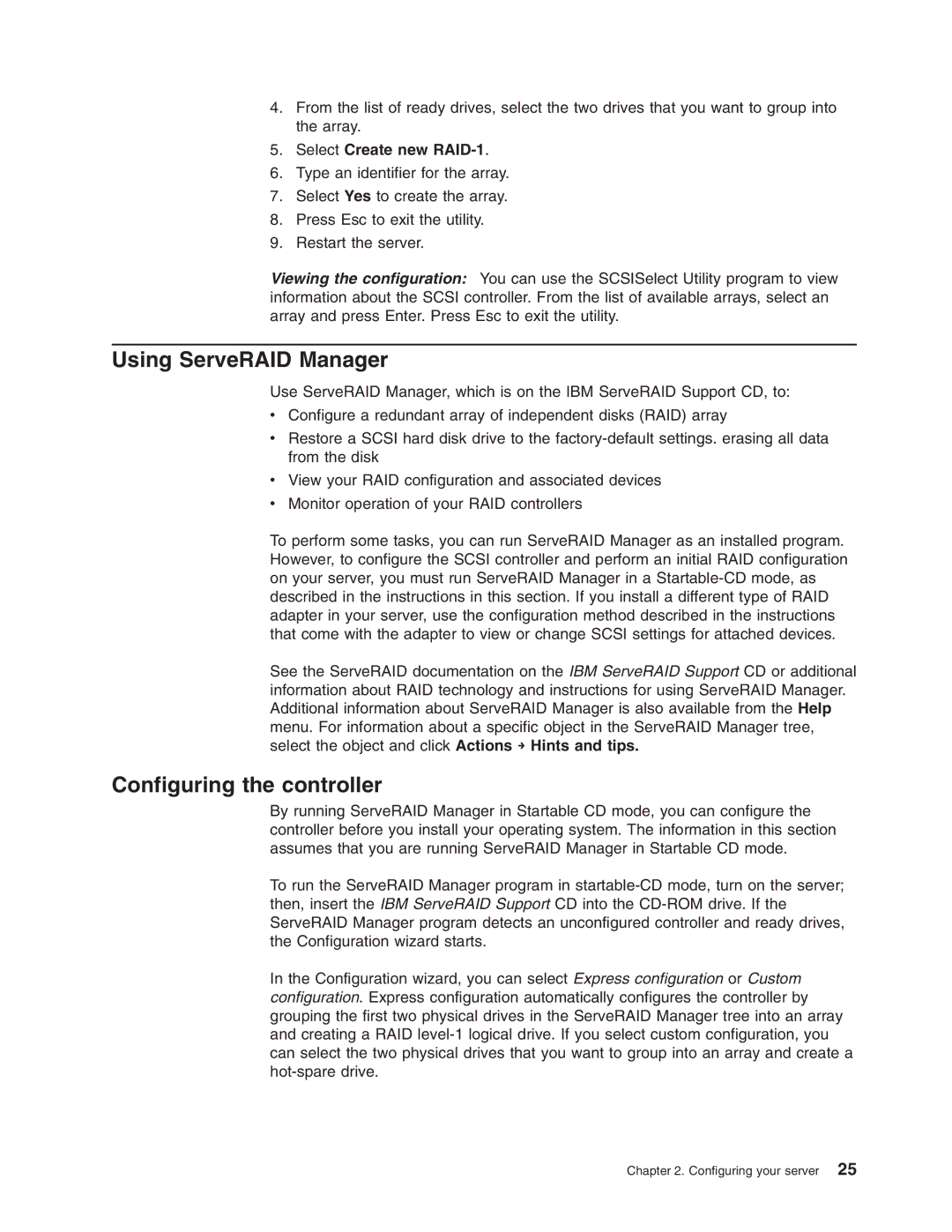4.From the list of ready drives, select the two drives that you want to group into the array.
5.Select Create new RAID-1.
6.Type an identifier for the array.
7.Select Yes to create the array.
8.Press Esc to exit the utility.
9.Restart the server.
Viewing the configuration: You can use the SCSISelect Utility program to view information about the SCSI controller. From the list of available arrays, select an array and press Enter. Press Esc to exit the utility.
Using ServeRAID Manager
Use ServeRAID Manager, which is on the IBM ServeRAID Support CD, to:
vConfigure a redundant array of independent disks (RAID) array
vRestore a SCSI hard disk drive to the
vView your RAID configuration and associated devices
vMonitor operation of your RAID controllers
To perform some tasks, you can run ServeRAID Manager as an installed program. However, to configure the SCSI controller and perform an initial RAID configuration on your server, you must run ServeRAID Manager in a
See the ServeRAID documentation on the IBM ServeRAID Support CD or additional information about RAID technology and instructions for using ServeRAID Manager. Additional information about ServeRAID Manager is also available from the Help menu. For information about a specific object in the ServeRAID Manager tree, select the object and click Actions → Hints and tips.
Configuring the controller
By running ServeRAID Manager in Startable CD mode, you can configure the controller before you install your operating system. The information in this section assumes that you are running ServeRAID Manager in Startable CD mode.
To run the ServeRAID Manager program in
In the Configuration wizard, you can select Express configuration or Custom configuration. Express configuration automatically configures the controller by grouping the first two physical drives in the ServeRAID Manager tree into an array and creating a RAID
Chapter 2. Configuring your server 25
